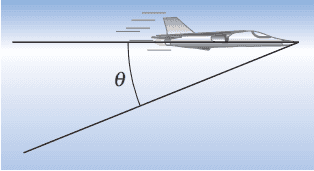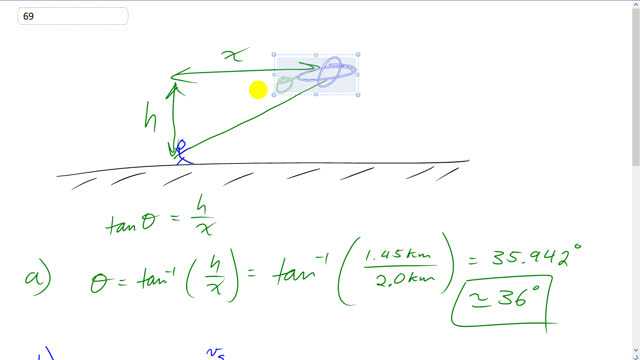
You look directly overhead and see a plane exactly 1.45 km above the ground flying faster than the speed of sound. By the time you hear the sonic boom, the plane has traveled a horizontal distance of 2.0 km. See Fig. 12–38. Determine
- the angle of the shock cone, , and
- the speed of the plane and its Mach number. Assume the speed of sound is 330 m/s.


In order to watch this solution you need to have a subscription.
This is Giancoli Answers with Mr. Dychko. So, the plane here was once over here before and it passed directly overhead and then it traveled some distance, x, by the time the shock wave was trailing behind, it reached the listener that was directly below the plane before. And so when the plane's directly above, you don't hear anything. And then the plane gets here and then finally you hear it. And it actually sounds like it's coming from over here because the shock wave that you hear was produced at this point. So, that's really confusing. But anyway. We have to figure out the angle of this shock wave cone. And we'll take the tangent of that angle is the height of the plane is traveling at divided by the distance that it's covered horizontally. And, I mean θ is inverse tangent of h over x, the inverse tangent of 1.45 meters out, or 1.45 kilometers altitude divided by 2.0 kilometers horizontal distance. And it's fine to leave them in kilometers, the only the important thing is that the units are the same. And we'll end up with 36 degrees is the angle of the shock wave cone. Now, sine of that angle is the speed of sound divided by the speed of plane so, we can solve for the speed of the plane by multiplying by vp over sine θ on both sides and we get vp as vs over sine θ. So, the speed of sound is 330 meters per second divided by sine of the angle we found before, putting in the unrounded number to avoid intermediate rounding error, and we get the plane speed must be 560 meters per second. And the Mach number is that plane speed divided by the speed of sound, and that's about 1.7.